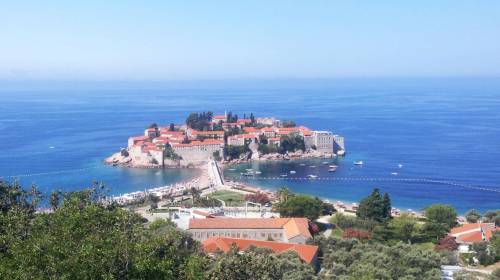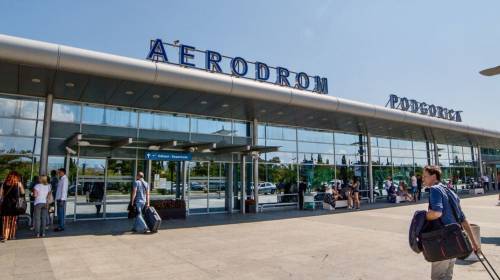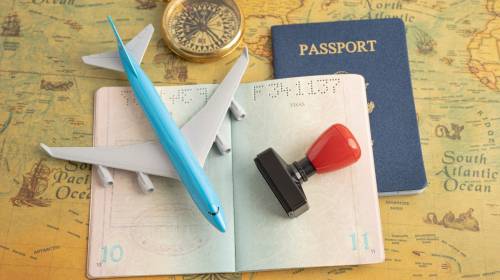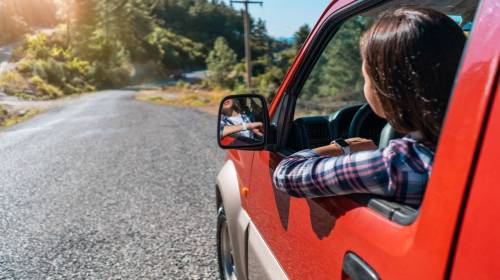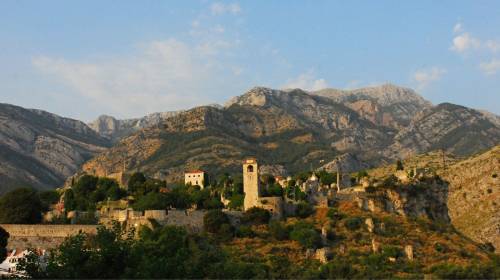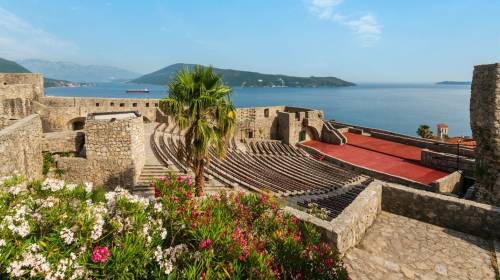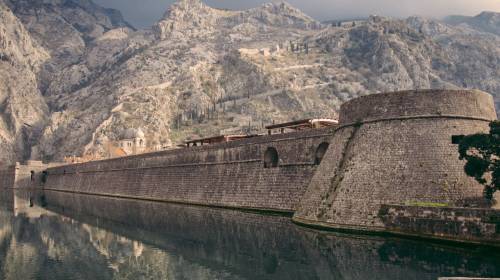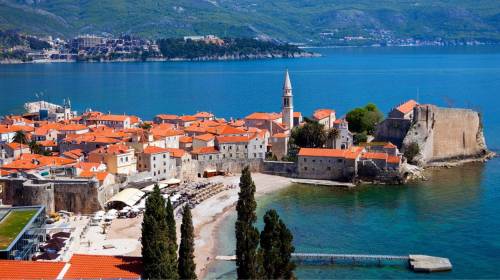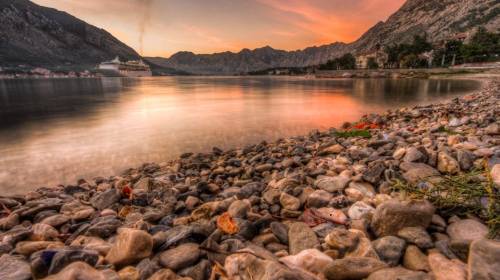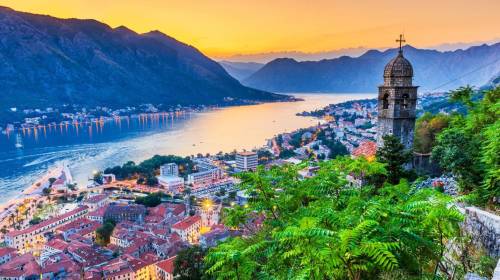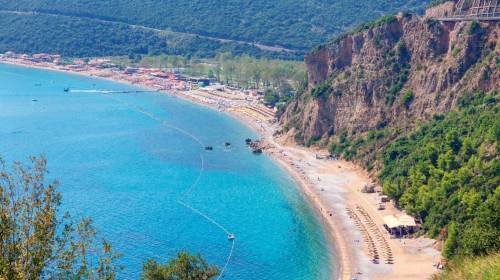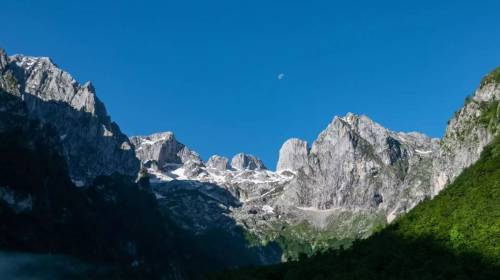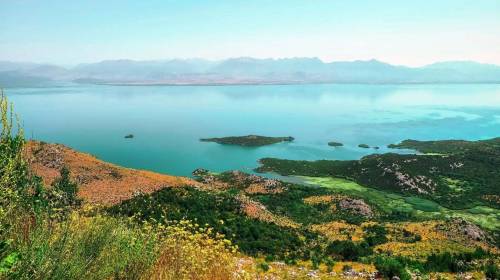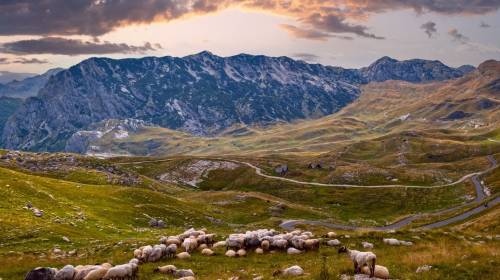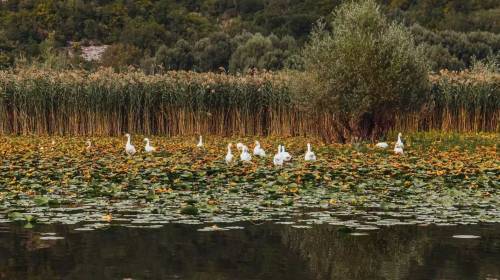Montenegro holiday: First time behind the wheel in Montenegro
Plan your Montenegro holiday with ease — from driving tips and weather to best routes, costs, and what to avoid. Everything you need in one guide.
Montenegro is a country where you can get from the beach to the mountains in just thirty minutes. That’s exactly why a Montenegro holiday is an experience where landscapes, towns, and nature are separated by short distances yet full of striking contrasts. Travel here doesn’t take long, but what you see and experience tends to stay with you.
If you’re planning a holiday to Montenegro, keep in mind that buses often won’t take you to hidden beaches, remote yet authentic villages, or centuries-old monasteries far from the main roads. With a car, however, you’ll be able to explore this unique country on your own terms — stop where you want, choose your own pace, and most importantly, avoid relying on rigid schedules.
That’s exactly why we’ve created this short guide — one that will genuinely come in handy. Up next: how to prepare for the trip, avoid common mistakes, and make the most of your Montenegro holiday adventure. Let’s get started...
Why choose a self-drive option for your Montenegro holiday?
Montenegro is a country made for road trips. It’s small enough to explore fully in seven to ten days, but diverse enough that no two days feel the same. Without rushing, you can see all the main sights and enjoy every part of the journey.
Self-driving brings far more freedom and flexibility than a typical holiday in Montenegro. You won’t depend on timetables or group schedules — you can stop whenever you see a viewpoint, a local restaurant, or something unexpected along the way (and Montenegro is full of those).
Benefits of exploring Montenegro by car:
- Incredible landscape diversity
In a single day, you can drive along the coast, visit a lake (like Skadar lake), and end up on a mountain pass. - Good road network
Major cities and tourist spots are well connected by reliable roads, so you’ll have no trouble reaching any place that catches your interest. - More budget-friendly travel
Compared to other European destinations, a holiday to Montenegro offers great value. Fuel and accommodation are still relatively affordable, meaning you won’t stretch your budget unnecessarily. - Short driving distances
Long drives are rare here. Most places are just one or two hours apart. That’s why driving in Montenegro is especially convenient for families with children. - Cross-border options
If you want to extend your trip, you can easily include routes through Croatia, Serbia, Albania, or Bosnia.
A Montenegro holiday lets you enjoy all of this without compromise – when you’re behind the wheel, everything is accessible and under your control.
Tip: If you’re visiting in July or August, plan ahead. Traffic is common along the coast, so it’s best to start your day early.
When to plan your Montenegro holiday: Weather by season
Montenegro’s climate largely depends on the region and the time of year. The coast stays warm from May to September, while the mountains remain cool even in summer. That’s why the timing of your trip should depend on what you want to see — and how much time you plan to spend on the road.
Temperature in Montenegro – seasonal overview
- Spring (March–May):
March brings average temperature in Montenegro of around 15°C, with occasional rain. April is slightly warmer (18–20°C), while May is arguably the best month for an active holiday in Montenegro, offering warm days and very pleasant evenings. - Summer (June–August):
June reaches around 28°C and is ideal for driving along the coast. July and August bring 32–40°C, strong sun, and the highest tourist numbers of the year. If your Montenegro holiday includes the seaside — and it probably does — this is the peak tourism season. - Autumn (September–November):
September and October are still warm, and road traffic drops noticeably. In contrast, temperature in Montenegro during November drops to around 15°C, with frequent rain — but quieter roads and a distinct, peaceful charm. - Winter (December–February):
Along the coast, winter is mild — around 10°C in December and 7–10°C through January and February. It’s a great time for scenic coastal drives and visiting beaches that are completely empty during this season.
Driving in Montenegro – what you need to know first
Driving in Montenegro is fairly straightforward for most visitors. People drive on the right-hand side, and speed limits are generally standard:
- 50 km/h in urban areas
- 80 km/h on intercity roads
- 100 km/h on highways
If you’re planning a Montenegro holiday by car, it’s important to know the basic rules and terrain specifics — especially if it’s your first time driving here.
Road rules and safety
- Minimum driving age is 18, and a valid license is required.
- The legal blood alcohol limit is 0.03% — stricter than in many countries.
- Using a phone while driving is prohibited unless with a hands-free device.
- All passengers must wear seatbelts. Children under 12 need proper restraints and cannot sit in the front seat.
Tip: Be sure to check Montenegro visa requirements in advance, as documentation can affect car rental eligibility.
Roads and traffic
- Speed cameras are located throughout the country. Fines start from €60 for minor violations.
- Vehicles from the right have the right of way at intersections. Pedestrians always have priority at marked crossings.
- In case of emergency, dial 112 or 122.
Special driving conditions
- Mountain roads:
Often narrow and winding — around 6 meters wide. Drive cautiously, especially when passing trucks or buses. Weather can change quickly, so monitor forecasts closely. - Coastal roads:
Scenic, but with sharp curves and heavy summer traffic. Defensive driving is essential. - General safety:
Local drivers often speed, especially in curves. Keep your distance and be cautious when overtaking. Wildlife crossings are common in rural areas, so stay alert.
Note: If you're planning an active Montenegro holiday, understanding local traffic conditions will help you travel stress-free. Driving in Montenegro isn't complicated, but with a bit of preparation, it becomes a much safer and more enjoyable experience.
Where to go during your Montenegro holiday – top self-drive routes
Montenegro offers three main routes that perfectly combine the coast, mountains, and historic towns. All of them are accessible by car, and each brings a unique experience. Thanks to short distances, you can easily combine them into a single Montenegro holiday road trip — one you’ll likely remember for a long time. Let’s break them down...
Coastal Route (Herceg Novi – Ulcinj)
This route follows 108 km of Adriatic coastline, connecting some of Montenegro’s most well-known towns and beaches. It’s perfect for those who want a mix of sea, history, and a drive with some of the most spectacular views on the Adriatic.
Main route highlights:
- Herceg Novi – Fortresses, botanical gardens, and a view of the Bay of Kotor entrance
- Budva – Old town, Jaz and Mogren beaches
- Bečići – Family-friendly beach town with landmarks like St. Thomas Church
- Sveti Stefan – Arguably the most photographed spot in the country. While the hotel is no longer operating, the islet is open for exploration
- Ulcinj – Eastern charm, historic sites, and a 13 km long sandy beach
Mountain Circuit (Durmitor – Biogradska Gora)
For nature lovers, this route offers near-alpine scenery, deep canyons, and untouched forest zones. Most of the road passes through national parks, giving you access to some of the most exciting Montenegro activities.
Must-see stops:
- Durmitor and Žabljak – The country’s highest town and mountain, with the iconic Black Lake
- Tara Canyon – The deepest in Europe, with breathtaking views and the Đurđevića Tara Bridge
- Biogradska Gora – One of the last remaining primeval forests in Europe, featuring a central lake and wooden walking paths
The route also goes through villages where traditional life still thrives. Stop for some local lamb, homemade cheese, and other mountain specialties. Note that many roads are closed in winter — the best time to visit is from June to October.
Bay of Kotor Loop
If you’re wondering where to go in Montenegro for history, culture, and incredible views, this circular route is the right choice. It’s about 88 km long and can be done in just a few hours.
Key stops along the way:
- Kotor – A UNESCO-protected old town with a 1,350-step fortress climb
- Perast – Baroque architecture and boat trips to the island of Our Lady of the Rocks
- Tivat – Porto Montenegro marina and proximity to Tivat Airport
The roads in this area are narrow, with tight curves and limited space for overtaking. Careful driving is a must, especially during summer when traffic increases significantly.
Tip: If you want to combine all three routes, plan your Montenegro holiday for 7 to 10 days. That gives you plenty of time for relaxed driving — and the spontaneous stops that make the trip worthwhile.
Things to do in Montenegro – what you can explore by car
As mentioned earlier, Montenegro is ideal for car-based exploration. Distances are short, roads are varied, and attractions are easy to reach without organized tours. On a single Montenegro holiday, you can visit beaches, national parks, and historic sites — all within just a few days (and if you’re energetic, some in just a few hours).
Beach hopping – quick and easy
The Budva Riviera offers multiple beaches within close range. You can visit several in a single day and are likely to find one that perfectly fits your style.
Recommended spots:
- Jaz Beach – Spacious and noticeably quieter than city beaches. Parking is right at the entrance.
- Kamenovo – Clear water, pebbly shore, 15 minutes by car from Budva.
- Zanjice – A hidden bay near Herceg Novi, reachable via a winding but scenic road.
- Sveti Stefan – Located in Budva, and likely the most recognizable destination on the Montenegrin coast.
Montenegro activities for active travelers
The north of the country offers more challenges and natural beauty. A Montenegro holiday for mountain lovers should include at least one national park — and chances are you’ll want to visit more after the first.
Top adventure locations:
- Durmitor – Hiking trails and the iconic Black Lake. Two hours from Podgorica.
- Tara River – Rafting tours with organized entry points and parking.
- Biogradska Gora – A rainforest and central lake, easily reached from Kolašin and Mojkovac.
- Lovćen – The mausoleum and perhaps the best view in Montenegro, just 30 minutes from Cetinje.
Cultural routes – history within reach
Most historical sites in Montenegro are easily accessible by car, with parking located nearby.
Where to stop:
- Kotor – Old town, museums, and defensive walls.
- Perast – A quiet coastal town, great for a day trip.
- Cetinje – The former royal capital, also known as “Museum City” and “Valley of the Gods.”
- Bar – A fortress and the oldest olive tree in Europe (over 2,000 years old).
- Herceg Novi – Fortresses and stairways with impressive views. Parking is available, but streets are narrow.
Note: If you're wondering where to go in Montenegro beyond the main tourist routes, the mountains and interior offer truly authentic experiences — as long as you’ve got the right vehicle for the terrain.
Practical planning for your Montenegro adventure
Every Montenegro holiday begins with your arrival. The country has two international airports — Podgorica and Tivat — both offering seasonal direct flights and accessible transfer options, including car rentals that are both affordable and efficient.
Flights to Montenegro and arrival options
Main airports:
- Podgorica (TGD) – More flights year-round, ideal for exploring the central and northern regions.
- Tivat (TIV) – Better connected to coastal towns like Budva and Kotor, but with fewer flights, especially outside peak season.
Airlines (direct or via connection):
- Air Montenegro
- Air Serbia
- Lufthansa
- Turkish Airlines
- Ryanair (seasonal)
Transfer options from airports:
- Taxi: €15–20 (Tivat), €7–12 (Podgorica)
- Bus: €3–5 to major towns
- Private transfer: €30–50
- Rental car: Available at both airports
For a hassle-free experience from the moment you land, Montenegro Car offers convenient pick-up options at both Podgorica and Tivat airports. Their vehicles are well-maintained, easy to book online, and ready to take you straight into your road trip.
Tip: If you're visiting in July or August, book transfers in advance — especially if your hotel doesn't provide a shuttle.
Montenegro visa requirements – what you need to know
Most travelers don’t need a visa for short stays:
- EU citizens: Entry allowed with a passport or ID card, up to 90 days.
- USA, Canada, Australia: Passport holders can stay up to 90 days within a 180-day period.
- Other countries: Check with the Montenegrin embassy; some require a visa in advance.
Your passport must be valid for at least three months beyond your departure date. Border crossings may involve delays in summer, especially from Croatia or Bosnia.
Bring proof of accommodation and a return ticket, especially if arriving from outside the EU.
Budget planning – daily expenses
Montenegro uses the euro, which makes financial planning easier for European visitors. Prices tend to be lower inland, while coastal areas are more expensive during the summer months.
Estimated daily budgets:
- Budget traveler: €20–40
- Mid-range: €50–100
- Luxury: €130+
Accommodation (per night):
- Hostels: €15–25
- Mid-range hotels: €50–100
- Luxury resorts: €200+
Food:
- Local meal: €8–15
- Mid-range restaurant: €15–25
- Street food or bakeries: €3–7
Transportation:
- Bus travel: €10–20 per day
- Rental car: From €25 per day
Note: Prices in July and August can rise by up to 50%. In smaller towns, cash is preferred over cards.
Common mistakes tourists make during their Montenegro holiday
No matter how well you plan, some mistakes repeat themselves year after year — and they’re easy to avoid with a bit of preparation. If this is your first time in the country, here are the most common pitfalls and how to steer clear of them.
Frequent mistakes (and how to avoid them)
- Skipping car rental
Many of Montenegro’s most stunning spots — like Ostrog Monastery or the Skadar Lake viewpoint — simply aren’t reachable without a car. For an authentic Montenegro holiday, renting a vehicle is practically essential. Contact a local agency early to make sure you're covered. - Choosing Podgorica as your main base
The capital city isn’t particularly focused on tourism. It lacks the natural beauty and attractions found along the coast or in the mountains. It’s better used as a transit stop than a vacation hub. - Relying on public transport
City buses do exist, but the system isn’t as developed as in larger European cities. If possible, stick with a rental car to keep your trip flexible and comfortable. - Placing too much trust in Google Maps
Maps often don’t reflect road quality. Off main routes, you may encounter gravel roads, sharp turns, or steep inclines — which the app doesn’t always indicate. Some outdated roads are still shown, so relying solely on the app during your Montenegro holiday could cause unnecessary detours.
Transport traps and better choices
|
Mistake |
Better option |
|
Relying on trains |
Use buses or rent a car |
|
Buying tickets randomly |
Use verified minibus services or terminals |
|
Digital-only tickets |
Always have a printed backup |
More avoidable mistakes
- Visiting Skadar Lake in poor weather
Rain makes boat tours difficult and hides the natural highlights like water lilies and birds. Always check the weather in Montenegro in August (or your travel month) before planning an outing. - Underestimating mountain weather
Conditions change fast in the highlands. Pack a light jacket and spare clothes even in summer. Temperature in Montenegro can vary dramatically between the coast and the north. - Misjudging the Kotor fortress hike
The 45-minute climb is no joke. You’ll need water, proper shoes, and plenty of patience. - Assuming prices are the same everywhere
Kotor is one of the priciest places in the country — largely due to cruise ship traffic. Expect higher prices than in other towns, and plan your budget accordingly.
Final note: A great Montenegro holiday starts with realistic expectations and solid information. With just a little awareness, most mistakes are easy to avoid.
Ready for your first road trip through Montenegro?
As you’ve seen throughout this blog, Montenegro offers an incredible range of experiences within a relatively small space. In just a few hours, you can visit medieval towns, mountain lakes, and coastal beaches — all without long drives or changing transport modes.
Quick planning checklist
- Best time to visit: May–June and September–October — mild temperatures and fewer crowds
- Documents: International driving permit and full insurance are required
- Currency: Euro — especially convenient for European travelers
- Route length: 7–10 days is ideal to cover major highlights
- Driving: Be cautious in the mountains and check your vehicle regularly
- Language: English is widely spoken, but basic phrases in Montenegrin go a long way
Must-see locations
- Bay of Kotor
- Budva
- Durmitor
- Cetinje
Tip: If you're wondering where to go in Montenegro for the best mix of nature and culture, we recommend combining the coast with the north.
You won’t need to drive hundreds of kilometers a day — yet you’ll gain experiences that in bigger countries could take weeks to find. That’s why road-tripping in Montenegro means constant changes of scenery and unforgettable moments, all in a compact and welcoming setting.
All that’s left is to visit this unique destination and let your Montenegro holiday be the week where you connect the Adriatic coast, dramatic mountain peaks, and historic landmarks — all from behind the wheel.
Frequently Asked Questions (FAQ)
Is a Montenegro holiday suitable for first-time visitors to the Balkans?
Yes — the country is compact, safe, and offers a great introduction to Balkan culture and landscapes. Most people speak basic English in tourist areas.
Where to stay in Montenegro if I want easy access to both beaches and national parks?
Stay in Budva for the coast and use Kolašin or Žabljak as a base for mountain adventures. All are within a few hours' drive.
What are the top Montenegro things to do besides the beach?
You can explore canyons, hike in national parks, visit medieval towns, and enjoy boat rides on Skadar Lake.
Are there direct flights to Montenegro from Western Europe?
Yes, especially during summer. Tivat and Podgorica airports serve many low-cost and traditional airlines.
Do I need a visa for a Montenegro holiday?
Most travellers from Europe, the US, and Canada don’t need a visa for stays up to 90 days. Still, always check updated Montenegro visa requirements before departure.
How long should I stay to get the most from my holiday Montenegro experience?
Seven to ten days is ideal to explore both the coast and the mountains without rushing.
Is it easy to combine multiple regions in a single Montenegro holiday?
Yes — short driving distances make it easy to visit beaches, lakes, and cultural sites all in one trip.
